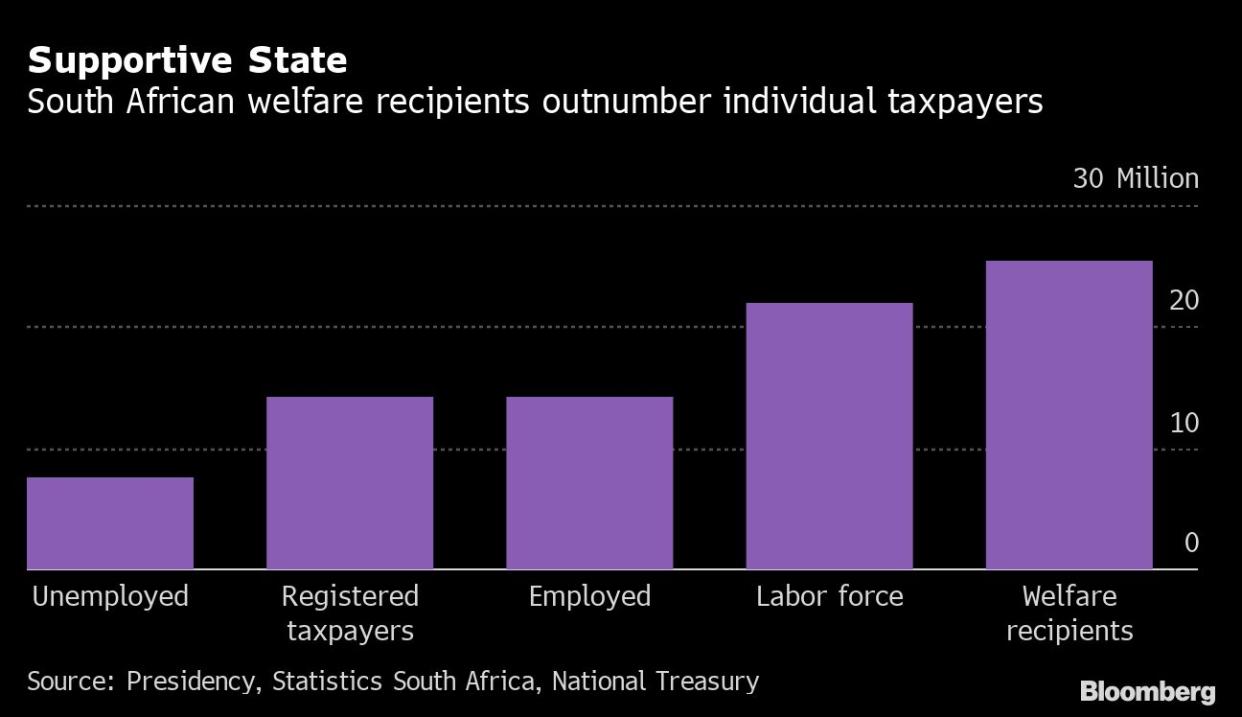South Africa Tightens Welfare Grant Criteria to Counter Abuse

(Bloomberg) -- South Africa is tightening the qualifying criteria for recipients of a welfare grant that was introduced to cushion the poor against the fallout of the coronavirus as it considers how best to continue providing support, a National Treasury official said.
Most Read from Bloomberg
Ukraine Latest: Biden Says Missile Likely Not Fired From Russia
Poland Says Russian-Made Missile Hit Territory and Killed Two People
Xi Looks Away From Putin Toward West in Return to World Stage
FTX Contagion Hits Winklevoss Twins as Crypto Lenders Come Under Fire
The so-called Social Relief of Distress grant was first paid in 2020, reintroduced in the wake of deadly riots in July last year, and extended until March 2024 in last month’s budget update. The 350-rand ($20.32) monthly stipend is intended to help support the jobless in a country where more than a third of the workforce is unemployed, but local media outlets have reported that it has been abused, with more than 5,000 government employees fraudulently receiving payments.
Read more: South Africa Wrestles With How to Offset Rising Living Costs
The government has worked with about eight of the country’s banks to undertake income tests for grant recipients and weed out those using multiple bank accounts to get payments, Mampho Modise, the deputy director-general for public finance at the National Treasury, said in a webinar on Wednesday. It is also trying to verify claimants’ employment status, she said.
“We are taking out the ones that don’t qualify for the grant,” she said.
South Africa will spend 243 billion rand, or almost 4% of gross domestic product on welfare, in the current fiscal year, with most of the money going toward child support and pensions, the medium-term budget shows.
Stringent qualification criteria will remain in place for future iterations of the welfare payment, Modise said. The National Treasury is working with other state entities, including the Department of Employment and Labour, on options to replace, complement or adjust the grant, she said.
About 7.4 million people out of a working-age population of 40 million receive the temporary stipend. If the current grant value and take-up rate remain the same and it is extended indefinitely, its cost will likely grow at an average of 8.8% per year to reach 65 billion rand in 2031, the Treasury said last month.
Without a source of permanent funding, which may include increases in revenue, spending reprioritization or a combination of the two, that amount “would threaten the sustainability of the public finances,” it said.
Most Read from Bloomberg Businessweek
North America’s EV Future Hinges on a North Carolina Turtle Pond
Google’s Moonshot Lab Is Now in the Strawberry-Counting Business
Twitter’s Layoffs Are the Perfect Example of How Not to Fire People
How Apple Stores Went From Geek Paradise to Union Front Line
©2022 Bloomberg L.P.


